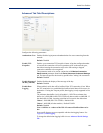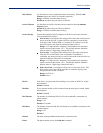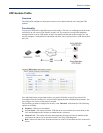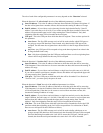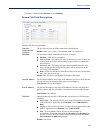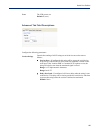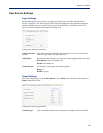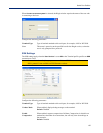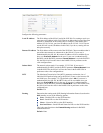
152
Serial Port Profiles
Terminal Type Specifies the type of terminal connected to the line.
Data Options:
z Dumb
z WYSE60
z VT100
z ANSI
z TVI925
z IBM3151TE
z VT320 (specifically supporting VT320-7)
z HP700 (specifically supporting HP700/44)
z Term1, Term2, Term3 (user-defined terminals)
Default: Dumb
Require Login When users access the IOLAN through the serial port, they must be
authenticated, using either the local user database or an external authentication
server.
Default: Enabled
User Service
Settings Button
After a user has been successfully authenticated, the IOLAN will connect to
the specified host using the specified protocol according to:
z the User Service parameter for locally configured users
z the Default User Service parameter for users who are externally
authenticated
z TACACS+/RADIUS for externally authenticated users where the target
host is passed to the IOLAN
See User Service Settings for field descriptions of the various User Service
Settings.
Connect to Remote
System
When the serial port is started, the IOLAN will initiate a connection to the
specified host using the specified protocol. With this option, user
authentication will not be performed by the IOLAN.
Default: Disabled
Protocol Specify the protocol that will be used to connect to the specified host.
Data Options: Telnet, SSH, Rlogin
Default: Telnet
Settings Button Click this button to define the settings for the protocol that will be used to
connect the user to the specified host.
Host Name The name (resolvable via DNS) or IP address of the configured host the
IOLAN will connect to.
TCP Port The TCP Port that the IOLAN will use to connect to the host.
Default: Telnet-23, SSH-22, Rlogin-513
Automatically If the serial port hardware parameters have been setup to monitor DSR or
DCD, the host session will be started once the signals are detected. If no
hardware signals are being monitored, the IOLAN will initiate the session
immediately after being powered up.
Default: Enabled



